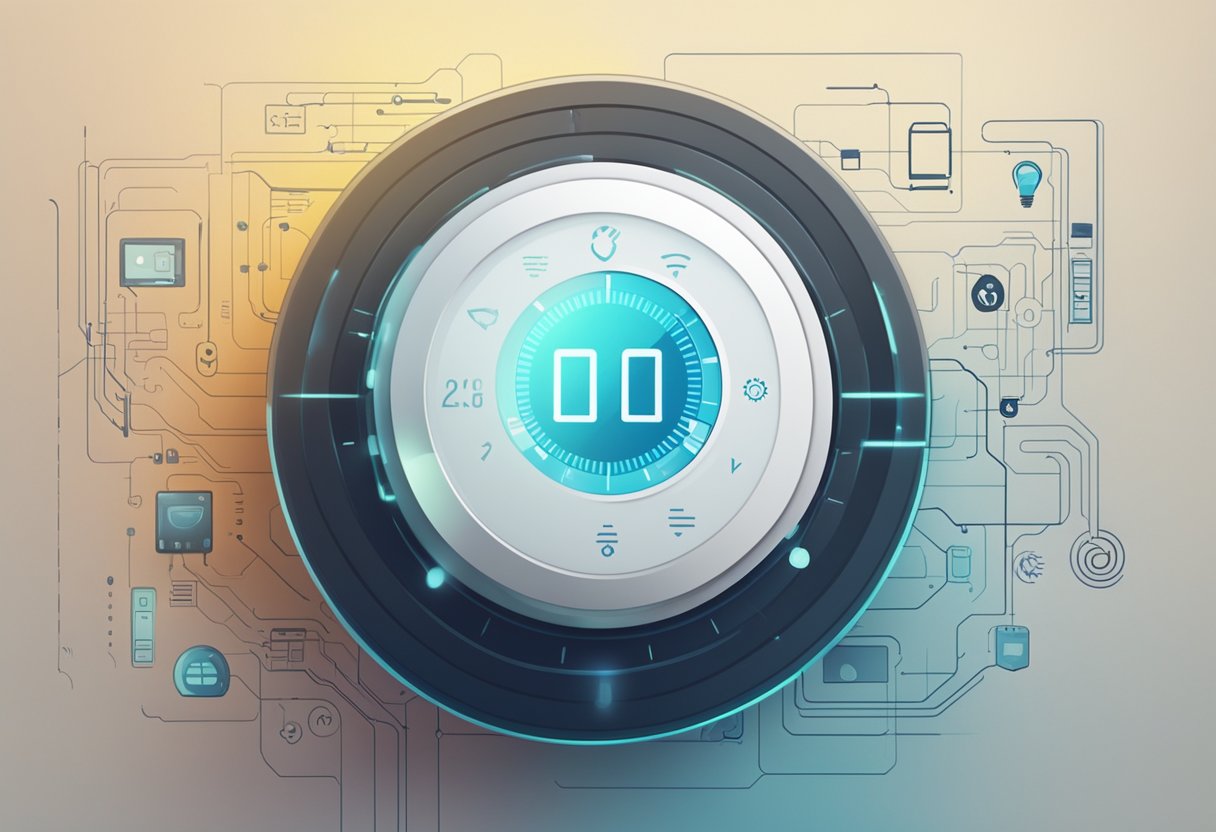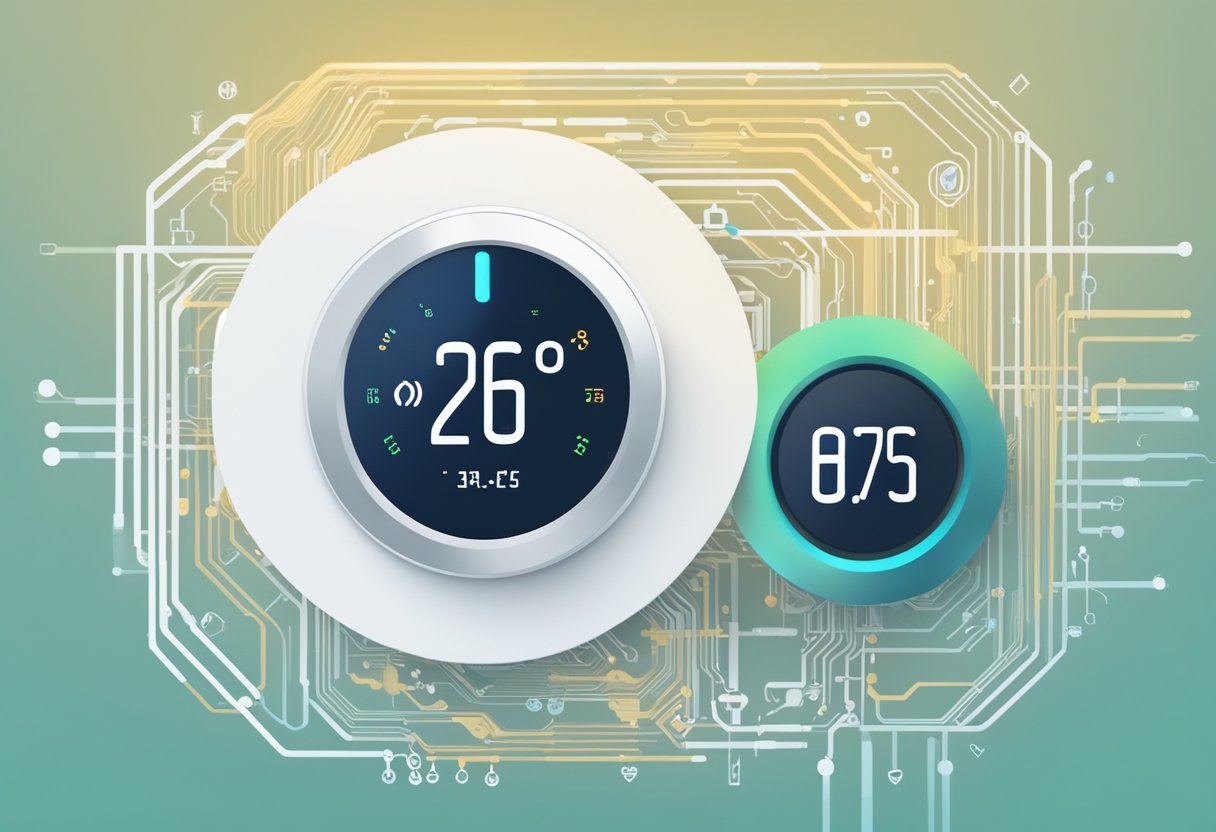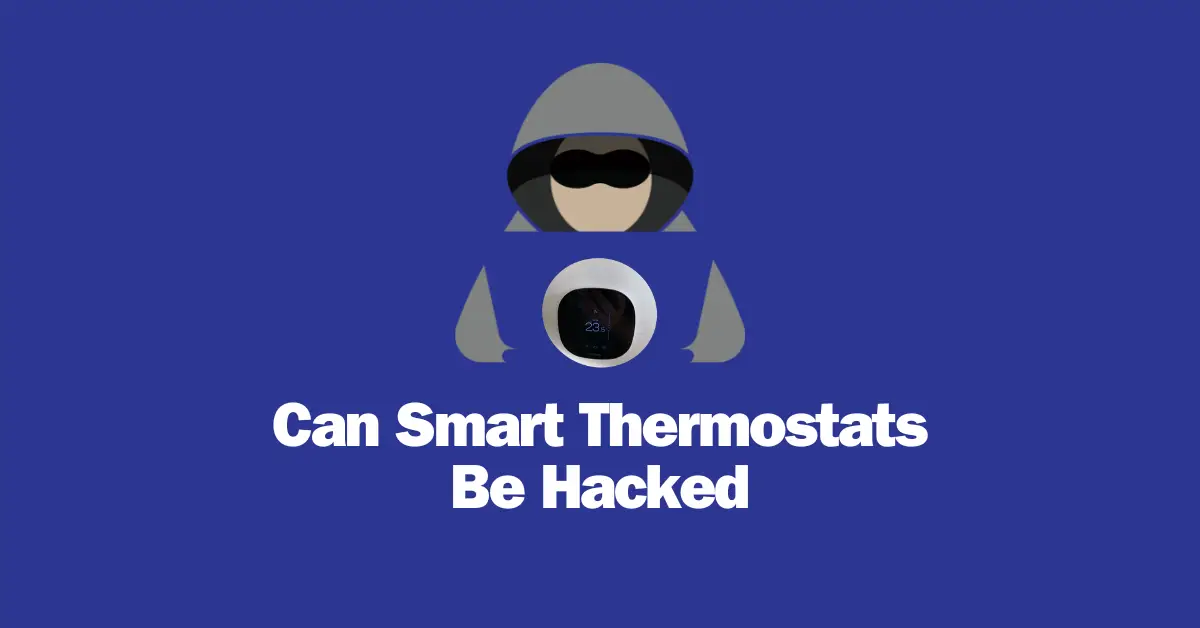Check Best Thermostat Pricing in Amazon
** As an Amazon Associate, I earn from qualifying purchases.
Smart thermostats have become increasingly popular in recent years due to their ability to save energy and money. However, with the rise of the Internet of Things (IoT), concerns about the security of these devices have also emerged. One of the main concerns is whether smart thermostats can be hacked, leaving homeowners vulnerable to privacy breaches and potential physical harm.

While smart thermostats offer convenience and energy savings, they also come with a potential downside. Hackers can exploit vulnerabilities in the devices to gain access to personal information or even control the temperature in a home. This raises questions about the safety and security of these devices, and whether they are worth the risk.
Despite these concerns, there are ways to mitigate the risks associated with smart thermostats. Homeowners can take steps such as ensuring their devices are up to date with the latest security patches and using strong passwords to protect their accounts. In this article, we will explore the potential risks and benefits of smart thermostats, and provide tips for keeping these devices secure.
Understanding Smart Thermostats

Smart thermostats are devices that allow homeowners to remotely control the temperature of their homes through a smartphone app or web interface. These devices are becoming increasingly popular due to their convenience and energy-saving features. However, there are concerns about the security of these devices and the potential for them to be hacked.
Components and Connectivity
Smart thermostats consist of several components, including a temperature sensor, a control unit, and a wireless connectivity module. The temperature sensor is used to measure the temperature in the room, while the control unit is responsible for adjusting the temperature based on the user’s preferences. The wireless connectivity module allows the thermostat to communicate with other devices, such as a smartphone or a home automation system.
Smart thermostats can be connected to the internet through Wi-Fi, allowing users to control the temperature of their homes from anywhere in the world. However, this also means that the thermostat is vulnerable to hacking if proper security measures are not in place.
Common Features and Controls
Most smart thermostats come with a range of features and controls, including:
- Temperature scheduling: Allows users to set specific temperatures for different times of the day
- Geofencing: Adjusts the temperature based on the user’s location
- Learning algorithms: Learns the user’s behavior and adjusts the temperature accordingly
- Energy-saving reports: Provides information on energy usage and suggests ways to save energy
These features can be controlled through a smartphone app or web interface, allowing users to adjust the temperature of their homes from anywhere.
Vulnerabilities of Smart Thermostats

Smart thermostats are becoming increasingly popular due to their convenience and energy-saving capabilities. However, like any internet-connected device, they are vulnerable to hacking. In this section, we will discuss the vulnerabilities of smart thermostats, including software flaws, network security weaknesses, and physical tampering.
Software Flaws
Smart thermostats are powered by software, which means they are susceptible to software flaws, bugs, and vulnerabilities. Hackers can exploit these vulnerabilities to gain access to the thermostat’s control system, allowing them to manipulate the temperature, turn the system on or off, or even steal sensitive information.
One common software flaw is the lack of regular updates. If the manufacturer does not regularly update the software, it can become outdated and vulnerable to attacks. Additionally, if the software is not properly secured, it can be reverse-engineered, allowing hackers to identify and exploit vulnerabilities.
Network Security Weaknesses
Smart thermostats are connected to the internet, which means they are vulnerable to network security weaknesses. Hackers can exploit these weaknesses to gain access to the thermostat’s control system, allowing them to manipulate the temperature, turn the system on or off, or even steal sensitive information.
One common network security weakness is the lack of encryption. If the thermostat’s communication with the internet is not encrypted, hackers can easily intercept and read the data being transmitted. Additionally, if the thermostat is connected to an unsecured network, such as a public Wi-Fi hotspot, it can be vulnerable to attacks.
Physical Tampering
Smart thermostats can also be vulnerable to physical tampering. Hackers can gain access to the thermostat’s control system by physically tampering with the device. For example, they can remove the thermostat from the wall and connect it to a computer to gain access to its control system.
To prevent physical tampering, it is important to secure the thermostat to the wall using screws or other hardware. Additionally, it is important to monitor the thermostat for any signs of tampering, such as scratches or dents.
Real-World Hacking Incidents

Reported Cases
Smart thermostats have been the target of hackers in the past. In 2016, a researcher discovered a vulnerability in a popular smart thermostat that allowed him to remotely control the device. The vulnerability was caused by a lack of encryption in the communication between the thermostat and the server, which allowed the researcher to intercept and modify the data.
Check Best Thermostat Pricing in Amazon
** As an Amazon Associate, I earn from qualifying purchases.
Another reported case involved a hacker gaining access to a smart thermostat in a hotel room and using it to access the hotel’s network. The hacker was able to steal sensitive information and compromise the security of the hotel’s guests.
Impact Assessment
The impact of these hacking incidents can be significant. In the case of the hotel hack, the hacker was able to access credit card information and personal data of the hotel guests. This not only put the guests at risk but also damaged the reputation of the hotel.
In addition, a hacked smart thermostat can be used to gain access to other devices on the same network. This can lead to further security breaches and potential damage to the devices and data on the network.
Preventative Measures

Smart thermostats are a convenient and energy-efficient way to control the temperature in your home, but they can also be vulnerable to hacking. Fortunately, there are several preventative measures that homeowners can take to minimize the risk of a security breach.
Regular Updates
Manufacturers of smart thermostats often release updates to fix security vulnerabilities and improve performance. It is important to regularly check for updates and install them promptly. Many smart thermostats have an automatic update feature that can be enabled in the settings menu.
Secure Network Practices
Smart thermostats are connected to the internet, which means they are only as secure as the network they are connected to. Homeowners should ensure that their home Wi-Fi network is secure by using a strong password and enabling WPA2 encryption. It is also recommended to change the default username and password on the router.
Strong Authentication Methods
Smart thermostats can be accessed remotely through a smartphone app or web portal. It is important to use strong authentication methods to prevent unauthorized access. Homeowners should use a unique and complex password for their smart thermostat account, and enable two-factor authentication if available.
By following these preventative measures, homeowners can reduce the risk of their smart thermostat being hacked and maintain the security of their home.
Future of Smart Thermostat Security

Advancements in Encryption
As the threat of smart thermostat hacking continues to grow, manufacturers are taking steps to improve the security of their devices. One of the most promising developments is the use of advanced encryption techniques to protect the data transmitted between the thermostat and other devices on the network.
Encryption works by scrambling the data so that it cannot be read by anyone who does not have the proper key to decrypt it. This makes it much more difficult for hackers to intercept sensitive information such as login credentials or personal data. As encryption technology continues to improve, it is likely that smart thermostats will become even more secure in the future.
Industry Regulations
Another important factor in the future of smart thermostat security is the role of industry regulations. Governments and other organizations are beginning to recognize the importance of securing IoT devices, and are implementing regulations to ensure that manufacturers take security seriously.
For example, the European Union’s General Data Protection Regulation (GDPR) requires companies to implement “appropriate technical and organizational measures” to protect personal data. Similarly, the United States’ Cybersecurity Information Sharing Act (CISA) requires companies to report any cyber incidents that could affect national security.
By holding manufacturers accountable for the security of their devices, these regulations could help to improve the overall security of smart thermostats and other IoT devices. However, it remains to be seen how effective these regulations will be in practice, and whether they will be able to keep up with the rapidly evolving threat landscape.
Conclusion
The future of smart thermostat security is uncertain, but there are reasons for optimism. With advancements in encryption technology and the implementation of industry regulations, it is possible that these devices will become much more secure in the coming years. However, it is important for consumers to remain vigilant and take steps to protect their own devices from hacking attempts.
Check Best Thermostat Pricing in Amazon
** As an Amazon Associate, I earn from qualifying purchases.


